Artist’s Resale Right: What Urban Art Collectors Should Know
In an increasingly sophisticated art market, it is important for collectors to understand the legal frameworks that shape acquisitions and resales. Among these, Artist’s Resale Right (ARR) is a statutory entitlement designed to ensure that artists, or their estates, benefit financially from the secondary market value of their work. The Artist’s Resale Right (ARR) entitles creators (‘authors’) of original works of art (including paintings, engravings, sculpture and ceramics) to a royalty each time one of their works is resold through an auction house or art market professional.
“Artist’s Resale Right is not just a legal requirement and it’s a principle we stand by. At GraffitiStreet, we believe our artists deserve to share in the ongoing value of their work. It’s part of what makes the art world more sustainable and respectful for all parties involved.”
Donna Haden, Co-Founder/ Creative Director, GraffitiStreet Gallery
At GraffitiStreet Gallery, we are committed to transparency, ethical collecting, and full compliance with UK and international resale regulations. This article outlines the essentials of ARR, how it is calculated, and what its application means for both buyers and sellers.
What Is Artist’s Resale Right (ARR)?
Established in the UK in 2006 under the Artist’s Resale Right Regulations, ARR entitles an artist to receive a royalty each time an original work is resold through a professional intermediary, provided certain conditions are met.
This royalty reflects the artist’s continuing authorship and contribution to the work’s market appreciation. ARR is not payable on first sales from the artist directly to a collector, but rather on subsequent resales within the regulated art market.
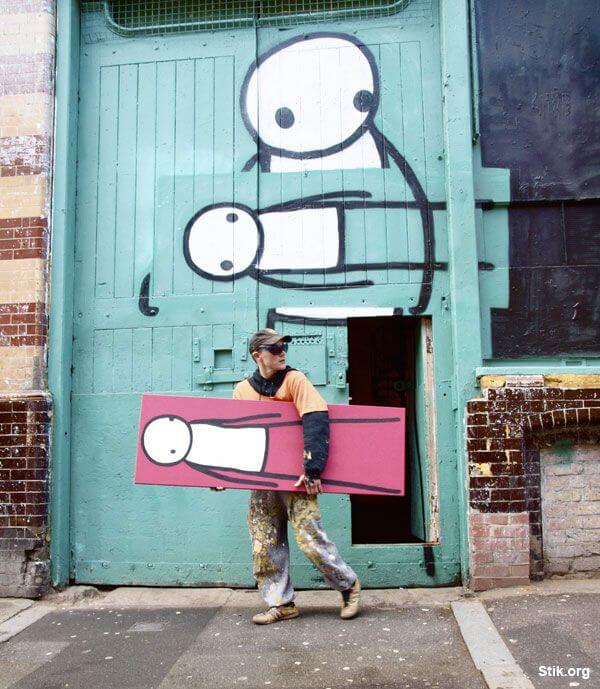
STIK Photo Credit Stik
Eligibility Criteria
ARR applies under the following conditions:
- The artist is a UK national, or a citizen of a qualifying country that recognises reciprocal ARR rights
- The work is resold through a gallery, auction house, or art dealer
- The resale price exceeds £1,000 as of
- The work is an original piece of art or a limited edition print, signed and numbered by the artist
- The sale is not exempt under the UK’s ‘bought as stock’ exemption
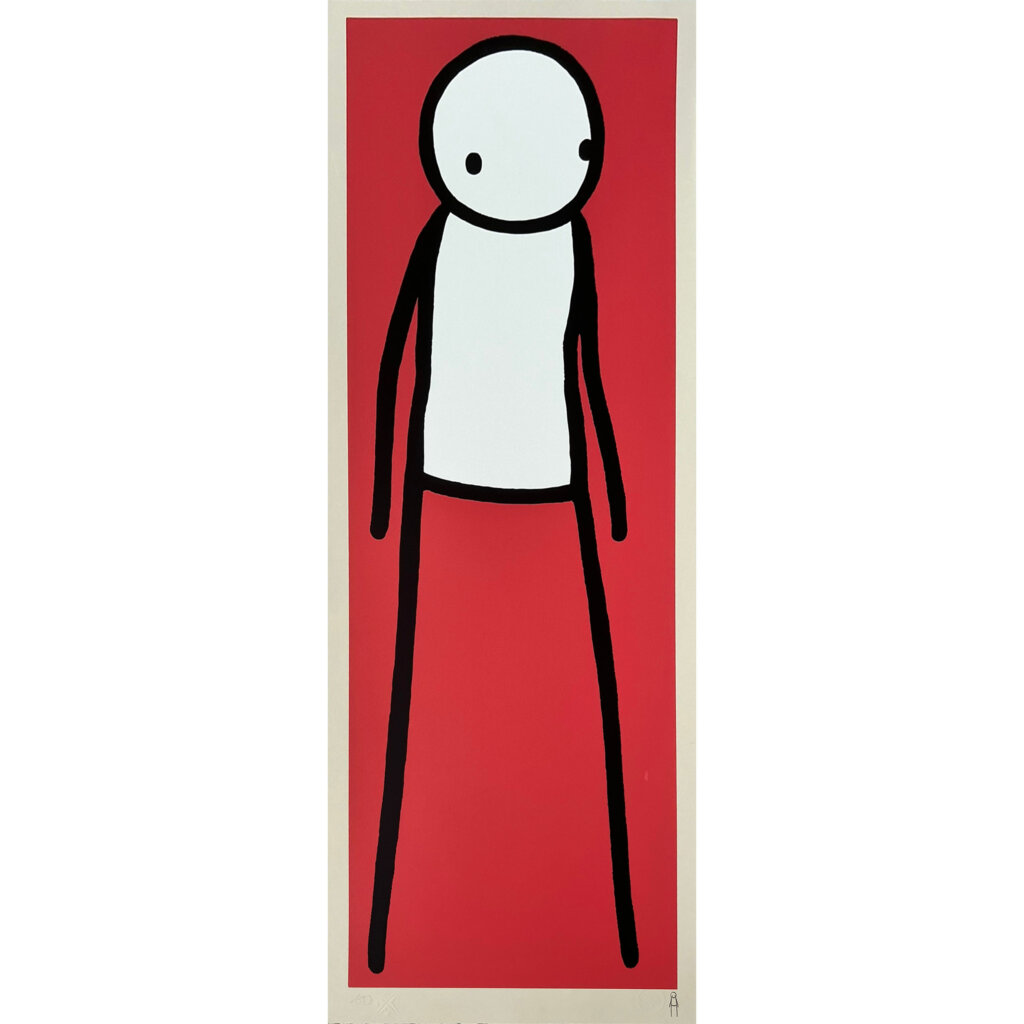
Purchase Stik – Walk (Red Edition) Print via GraffitiStreet here
Updated ARR Thresholds and Royalty Structure (April 2024)
Artist’s Resale Right (ARR) royalties are calculated on a sliding scale based on the resale price of a qualifying artwork.
As of 1 April 2024, the minimum threshold for ARR in the UK is £1,000, replacing the previous threshold of €1,000. The maximum royalty payable on any single resale is now capped at £12,500, replacing the previous threshold of €12,500. This update was introduced under The Design Right, Artist’s Resale Right and Copyright (Amendment) Regulations 2023, aligning ARR with the UK’s domestic currency and streamlining compliance for collectors and art professionals.
| Portion of Resale Price (£) | Royalty Rate |
|---|---|
| Up to £50,000 | 4% |
| £50,001 – £200,000 | 3% |
| £200,001 – £350,000 | 1% |
| £350,001 – £500,000 | 0.5% |
| Over £500,000 | 0.25% |
ARR is exempt of VAT. For sales completed prior to 1 April 2024, ARR continues to be calculated in euros, with a threshold of €1,000 and a maximum royalty cap of €12,500.
The artist or estate receives the royalty through an approved collecting society, such as DACS (Design and Artists Copyright Society) or ACS (Artists’ Collecting Society).
Qualifying Countries
The UK grants ARR rights to artists from:
EU Member States
European Economic Area (EEA): Norway, Iceland, Liechtenstein
Australia (from 31 March 2024)
New Zealand (from 1 December 2024)
See full list of 106 countries here.
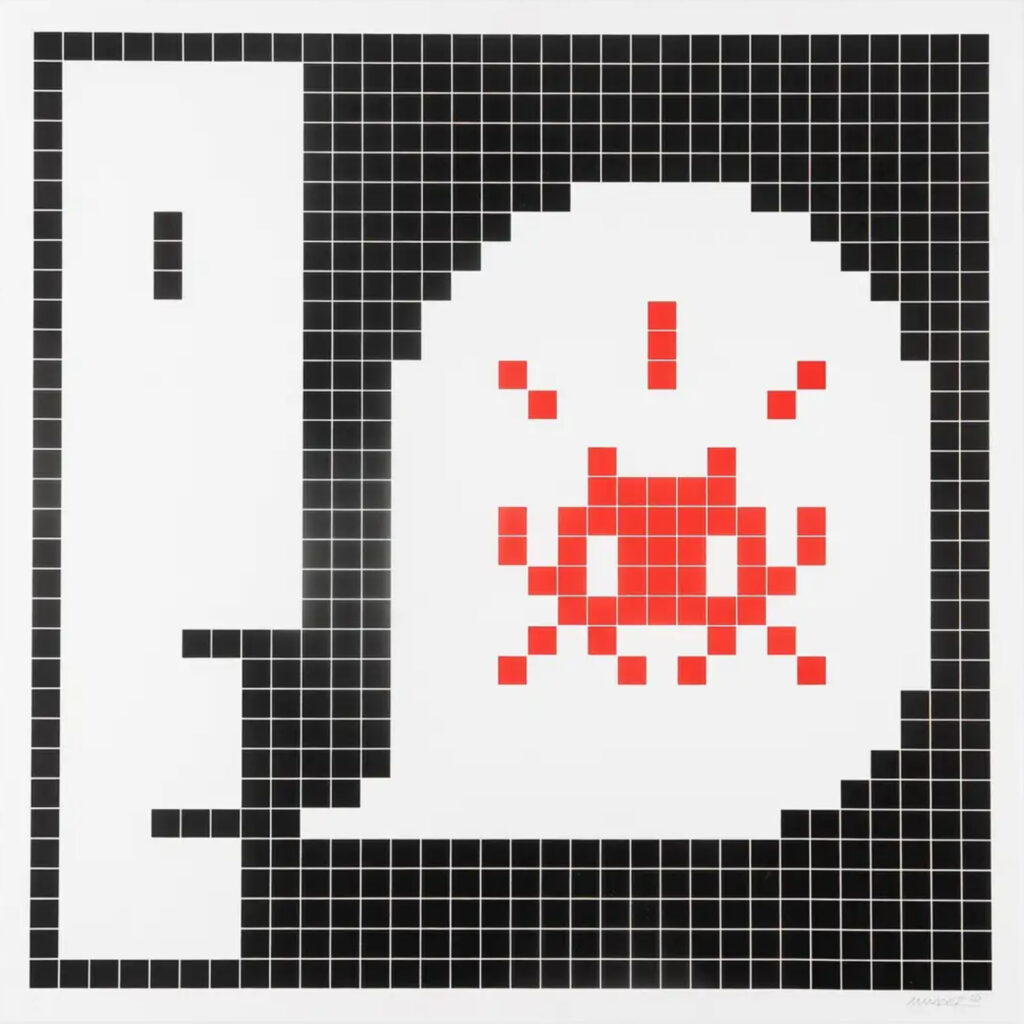
Purchase Invader – Alert (Red) Print via GraffitiStreet here
Exemptions: The ‘Bought as Stock’ Provision
Under UK legislation, ARR does not apply if all three apply:
- The artwork was purchased directly from the artist
- The resale occurs within three years of that original acquisition
- The resale price does not exceed £10,000 (€10,000 prior to 1 April 2024)
This exemption, often referred to as the ‘bought as stock’ clause, is designed to support dealers and galleries investing in emerging artists by allowing a short-term resale window without incurring ARR on lower-value transactions.
Limited Edition Prints and ARR
The Artist’s Resale Right (ARR) entitles creators (‘authors’) of original works of art (including paintings, engravings, sculpture and ceramics) to a royalty each time one of their works is resold through an auction house or art market professional. Collectors should be aware that ARR also applies to limited edition prints, provided they meet the following criteria:
- They are signed and numbered by the artist
- They are produced in limited quantities under the artist’s supervision
- They are resold for more than £1,000 through a professional intermediary
Prints such as Banksy – Soup Can (Banana/Lime/Purple), or editions by artists like STIK, Invader, and D*Face fall into this category.
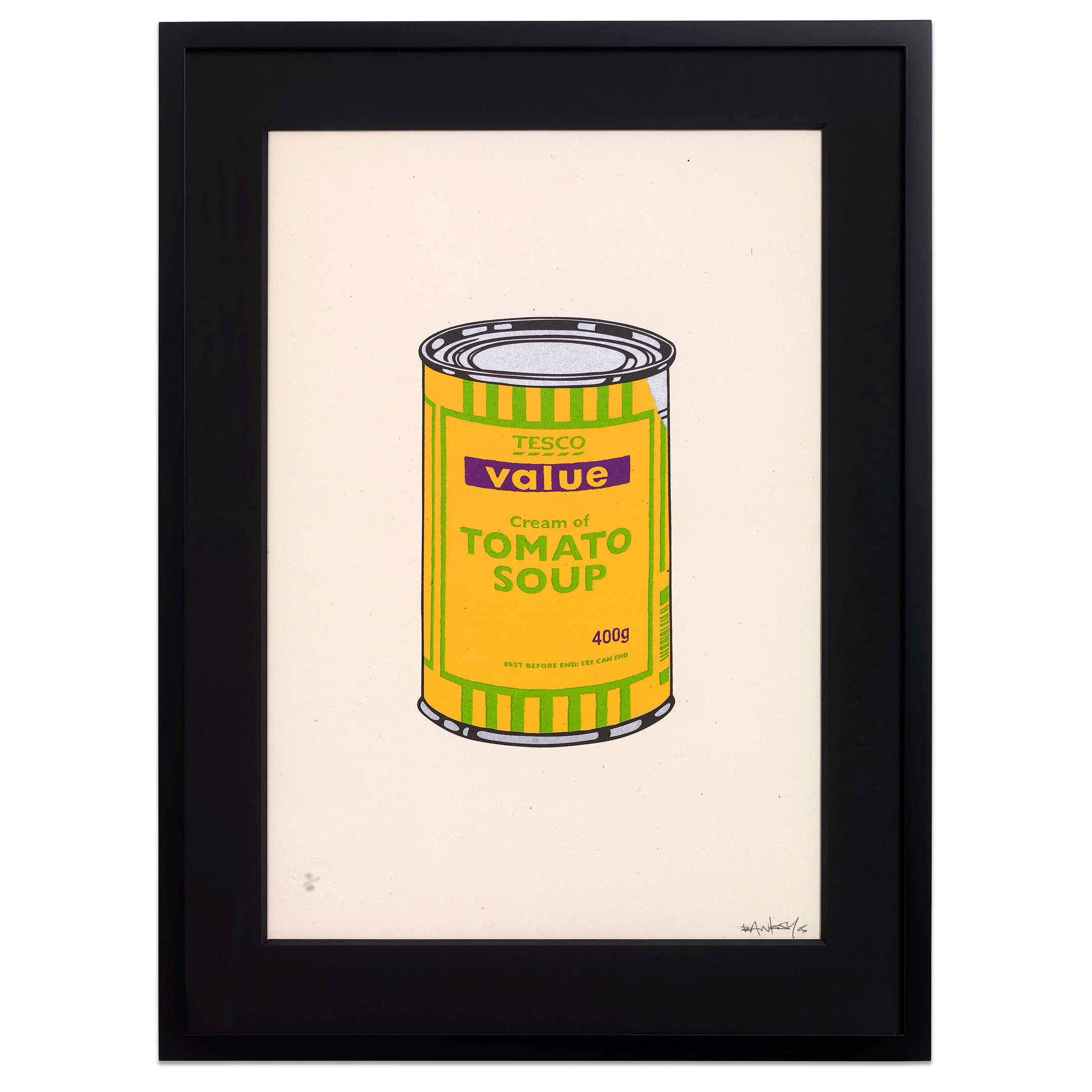
Purchase Banksy – Soup Can (Banana/Lime/Purple) via GraffitiStreet here
Application in Practice: Banksy, Morons (Sepia)
Consider the example of our client reselling Banksy’s Morons (Sepia), a well-known screen print edition, through GraffitiStreet Gallery at a price of £33,000. The artist, Banksy, is a living UK national, the work is a signed and numbered limited edition, and the transaction is conducted through us, a professional intermediary.
In this case, ARR applies, and the royalty due is calculated at the 4% of the sale price: Meaning ARR = £1,320 This amount is pre calculated and deducted from the final price and remitted to the artist via a collecting society, such as DACS.
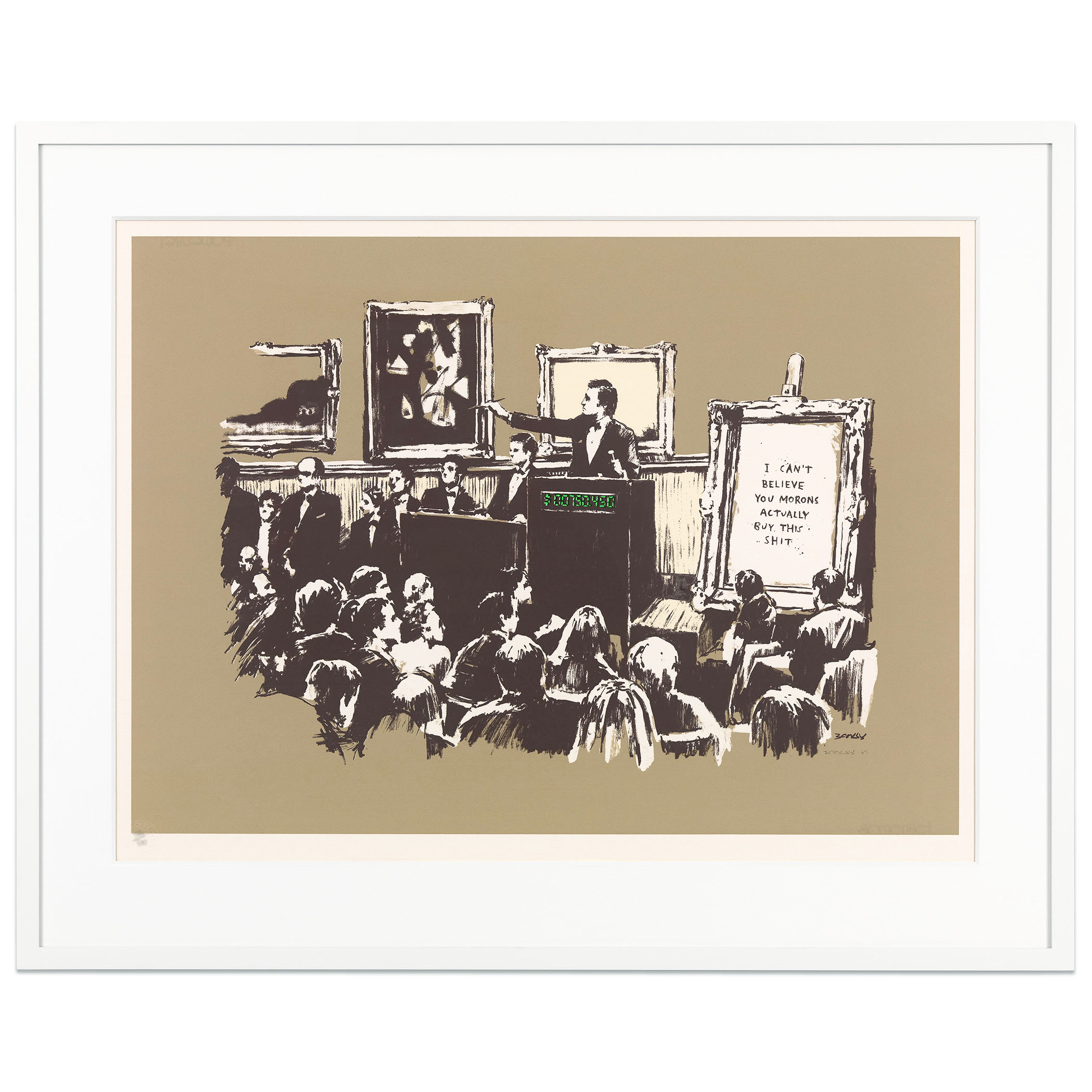
Purchase Banksy – Morons (Sepia) via GraffitiStreet here
Does ARR Apply If a Work Is Resold at a Loss?
Yes. Under UK law, Artist’s Resale Right is calculated based on the resale price of the artwork and not on whether the seller makes a profit. If a qualifying work is resold through a professional intermediary for more than £1,000, ARR applies regardless of whether the original purchase price was higher or lower.
For example, if a collector originally acquired a Banksy print for £14,000 and later resells it for £12,000, a 4% resale royalty is still due on the £12,000, even though the sale results in a financial loss. The ARR framework is designed to support artists based on market activity, not on the profitability of individual transactions.

Purchase D*Face – Going Nowhere Fast Print via GraffitiStreet here
GraffitiStreet’s ARR Policy
At GraffitiStreet, we believe in clarity and supporting artists beyond the first sale. That’s why:
- All artwork prices shown on our website include ARR, where applicable
- There are no hidden ARR fees added at checkout
- Shipping costs are calculated at checkout
- Customs duties and import fees (including clearance) are the buyer’s responsibility, as these vary by country and U.S. state
GraffitiStreet complies fully with the UK Artist’s Resale Right Regulations 2006 (as amended). Where ARR is due, it is included in the advertised price and remitted through appropriate channels. We work with DACS (Design and Artists Copyright Society) to ensure artists and estates receive royalties fairly and efficiently.
Further Reading & Resources
For more information on ARR, we recommend the following resources:
- UK Government ARR Guidance (GOV.UK)
- DACS – Artist’s Resale Right Explained
- ACS – Artists’ Collecting Society
For further guidance or to discuss a specific acquisition or consignment, we invite collectors to contact us directly. You are welcome to visit us at GraffitiStreet Gallery, located at 25a West Street, Chichester, West Sussex, or explore our current offerings and services online at graffitistreet.com. Our team is available to assist with enquiries, secondary market sales, and tailored advisory support.